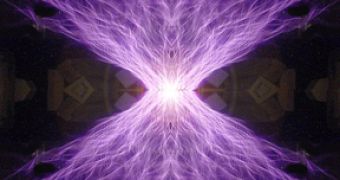In August this year, astronomers studying the Cosmic Microwave Background Radiation or CMB, a 'remnant' of the Big Bang, discovered a texture of a giant cold spot in the universe, completely empty of any normal matter or dark matter and even any kind of radiation. In order to explain how such a void might have formed in the middle of our universe, physicists and cosmologists developed a theory in which the giant void might be evidence of another universe developing in the one we are part of.
In the middle of the 20th century the American physicist Hugh Everett was the first to take into consideration the existence of other universes than our own. Since then a number of theories regarding the existence of such entities have developed, from quantum physics to the string theory, describing the possibility of parallel universes existing outside the Hubble volume which we are living in, which implies the existence of at least an identical individual outside the observer's Hubble volume, or parallel universes existing in other dimensions at a distance of only a millimeter away.
The mysterious large void has been estimated to be almost one billion light years across and is situated somewhere in the Eridanus constellation. The theory that it might be the sign of another universe came from Dr Laura Mersini-Houghton, a theoretical physicist at the University of North Carolina and it will be the first exo-universe ever discovered outside our own universe if the statement is found to be true.
The CMB represents the leftover of the first radiation emitted by the matter present in the universe, after the Big Bang, which presents the predicted red-shift, thus appearing in the microwave spectrum. The first evidence of the large hole inside our universe came from images taken by NASA's Wilkinson Microwave Anisotropy Probe and the Sloan Digital Sky Survey, in 2004. Actually the cold spot is not completely devoid of matter as the astronomers first suggested, but it seems to present a smaller number of galaxies than the surrounding areas comparable to its volume and far less radiation is being emitted from the respective region of space. The calculations suggest that the volume presents about 20 to 45 percent less matter than normally found in the visible universe.
Previous similar voids presenting lack of matter have been discovered, but this is the largest one up to date, having 900 light-years in diameter; the void is situated at about 8 billion light-years away from our galaxy. Theories about the Big Bang and the formation of the universe found it difficult to explain how such a structure might have formed and what the purpose for its existence is.
Multiple teams of scientists claim that the hole is a so-called a 'topological defect', similar to that which allowed the formation of large structures like the galaxies. However the team led by Mersini-Houghton proposed that it might be another universe developing in our own. Using the string theory, which is notorious for its predictions regarding the existence of other universes that describe about 10,000 universes, each one with unique physical properties and configuration, the team suggested that the large vacuum present in that particular region of space is a result of the universe's expansion and is created to act as a force to counter-balance the action of the gravitational force, keeping the universe spread over enormous regions of space rather than shrinking to a singularity, to disappear out of existence.
The large void is positioned in the northern hemisphere of the sky related to the Earth. Scientists predicted that eventually another large cold spot will be found somewhere in the southern hemisphere. However the claims made by the Mersini-Houghton team are mostly speculative, but nevertheless interesting, until further experiments are made to validate or reject their theory.

 14 DAY TRIAL //
14 DAY TRIAL //